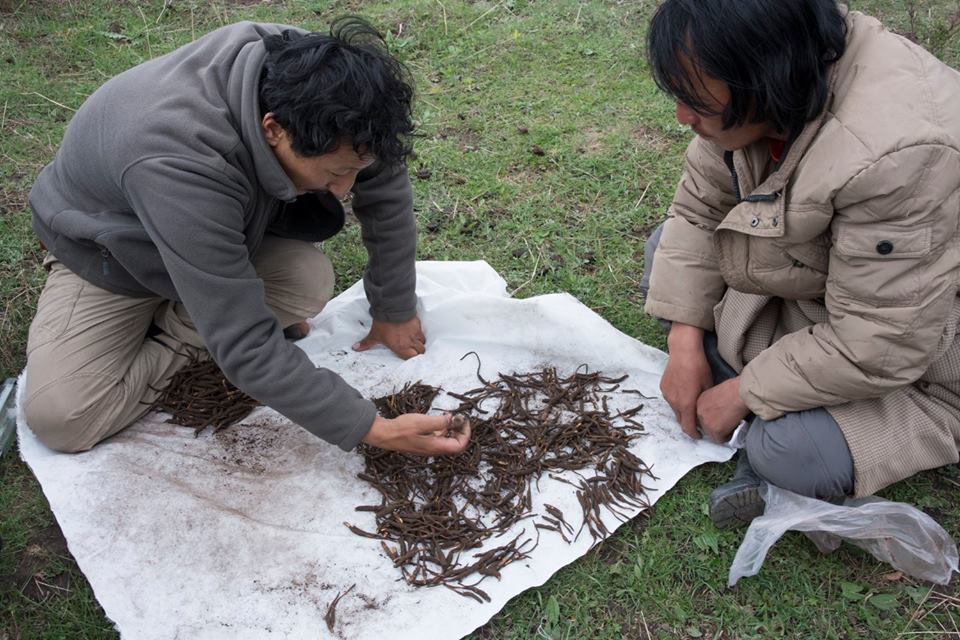Yartsa Gunbu
/‘Golden worm’ or caterpillar fungus fever comes every year around May, with people dropping whatever they do to seek their fortune crawling on the pasture in search of the worm. I had heard about this magic worm for years, its name meaning “ grass in summer, insect in winter” and was made to believe that it seasonally switched from one form to the other. I tried to argue that this sounded absurd, but it was one of those things that made no sense but was rock hard in people’s beliefs. Curious, I looked it up and found out that yartsa gunbu was a mummified caterpillar, the underground-dwelling larva of the ghost moth that had been infected by a parasitic fungus called Ophiocordyceps sinensis. The fungus devours the inside of catapillar’s body leaving only the exoskeleton and blooms in spring in the form of a brown stalk, called the stroma, that erupts from the caterpillar’s head. This process happens only in the fertile grasslands of the Tibetan Plateau and all attempts at farming the fungus have failed. This information enabled me to tell guilty Tibetans that they was not the cause of the caterpillar’s death, that it was already dead. They didn’t mind hearing that. By the year 2000, the boom was in full swing, and when we got into the yak khullu business, we found that it interfered with yak khullu picking, which happened at the same time. People boasted how much money they could make from picking the worms, and every nomad who wasn't tied down to his or her animals would spend a month or two crawling through the pasture on hands and knees. Ritoma nomads had to assign guards to make sure outsiders didn’t intrude into their pastureland, reserving the pursuit and collection of worms to their own. Dechen and I watched all this with some dismay. Some boasted that it Yartsa gunbu was a windfall for nomads, that it had lifted thousands from poverty. Yes, but at what price? Already, we could see that some workshop employees who had quit their jobs to look for worms were asking for them back, saying the returns were too poor and their backs hurt. Yidam’s cousin, whose herd grazes in summer on the high grasslands of Sankhok, said that twenty years ago, the little stroma stalks were everywhere, and now no longer. We were sure they had a part to play in the delicate ecosystem of the grassland, where yaks eat medicinal plants and fertilize the pasture with their dung, enabling certain plants to complete their cycle. No one would know until it was too late. Last year, on the road to Norden camp, we saw the telltale sign of two cars stopped on opposite sides of the road. Two nomads were gathered around something on a white cloth and discussions were going on. It was catapillar season and Yidam knew right away they were engaged in trade. We stopped by and looked at the offerings; an array of worms still covered in the rich brown earth of the pasture. They made their deal and the buyer left, crossing the road to his car. Yidam bought a few caterpillars, for 20 Yuan each. By Kim Yeshi




